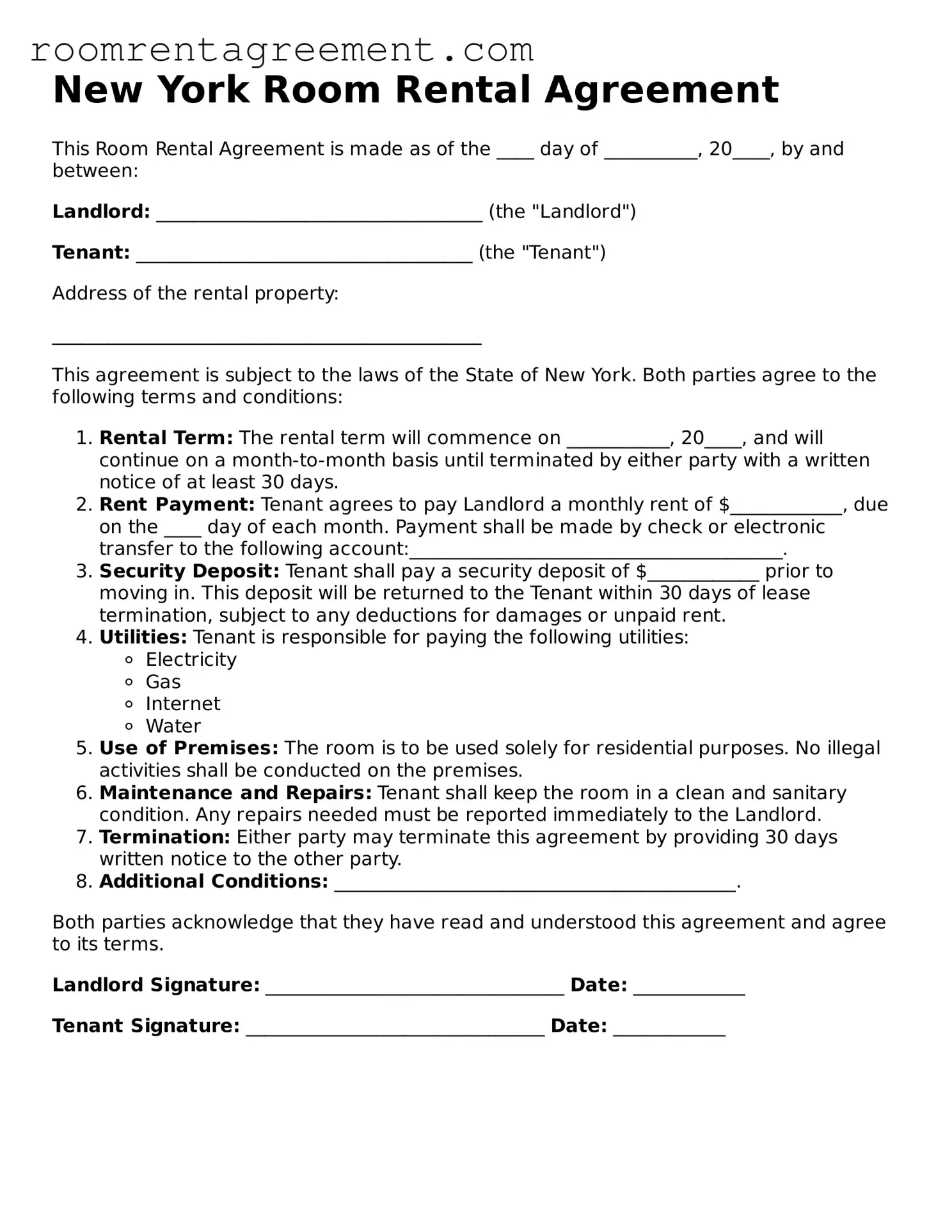The New York Room Rental Agreement form shares similarities with a Lease Agreement. Both documents outline the terms under which a tenant can occupy a property. They specify the duration of the rental period, the amount of rent due, and the responsibilities of both the landlord and tenant. While a Lease Agreement often covers a longer term, a Room Rental Agreement typically focuses on a single room within a larger property, making it more flexible for short-term arrangements.
A Rental Application is another document that aligns closely with the Room Rental Agreement. Before signing an agreement, potential tenants usually fill out a rental application. This form collects personal information, rental history, and financial details to help landlords assess the suitability of applicants. While the Room Rental Agreement formalizes the rental terms, the application serves as the first step in the rental process.
The Sublease Agreement is similar in that it allows a tenant to rent out their space to another person. In a Room Rental Agreement, the primary tenant may have the right to sublet their room. Both documents require clear terms regarding the rental amount, duration, and responsibilities. However, a Sublease Agreement typically involves a tenant who is already renting a property, while a Room Rental Agreement is often between a landlord and a new tenant.
A Roommate Agreement is another related document. This agreement is designed for individuals sharing a rental space. It outlines responsibilities such as rent payments, utility bills, and household chores. While the Room Rental Agreement focuses on the rental terms with the landlord, the Roommate Agreement addresses the dynamics between co-tenants, ensuring everyone is on the same page.
The Rental Receipt is also relevant. After paying rent, tenants often receive a rental receipt as proof of payment. This document is important for both landlords and tenants. It provides a record of transactions and can be useful for tax purposes or dispute resolution. While it does not outline rental terms, it complements the Room Rental Agreement by documenting financial exchanges.
A Move-In Checklist is similar as well. This document helps tenants and landlords document the condition of the property before the tenant moves in. It can include details about existing damages or issues. Both the Move-In Checklist and the Room Rental Agreement aim to protect the interests of both parties, ensuring clarity about the property's condition at the start of the rental period.
The Eviction Notice is another document that can relate to a Room Rental Agreement. If a tenant violates the terms of their agreement, a landlord may issue an eviction notice. This document formally notifies the tenant of their lease violations and outlines the steps for eviction. While the Room Rental Agreement establishes the terms of occupancy, the Eviction Notice addresses the consequences of not adhering to those terms.
A Security Deposit Agreement is also relevant. Many Room Rental Agreements require a security deposit to cover potential damages. This separate agreement outlines the amount of the deposit, the conditions for its return, and any deductions that may be taken. It protects both the landlord and tenant by clearly defining the expectations regarding the deposit.
A Termination Notice can be compared as well. This document is used when either party wants to end the rental agreement. It specifies the reasons for termination and the required notice period. Like the Room Rental Agreement, the Termination Notice is essential for maintaining clear communication and ensuring that both parties understand their rights and obligations when ending the rental relationship.
Finally, the Addendum to Lease is another document that can be similar. This is used to modify the original Room Rental Agreement by adding specific terms or conditions. For instance, if there are new rules about shared spaces or additional fees, an addendum can be created. This document ensures that all parties are aware of any changes to the original agreement and helps maintain clarity in the rental relationship.
